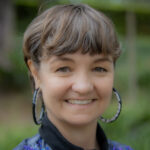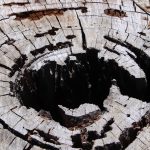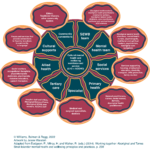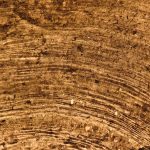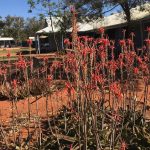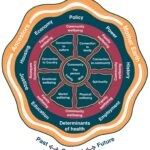
June 2023
Download An Aboriginal person’s holistic view of health in action PDF
Megan Williams, Mark Ragg and Jack Bulman Yulang developed a way of visualising health, from an Aboriginal person’s perspective, that draws on the National Aboriginal Community Controlled Health Organisation’s definition of health has been used in the view shown below (Williams & Ragg, 2022). See Figure 1.
Figure 1: Aboriginal people’s holistic view of health

Copyright Williams, Ragg & Bulman, 2022. Artwork by Jessie Waratah
The view that we have drawn places Aboriginal people at the centre, and not alone. Family, community and mob are there, with us.
The individual person and mob are surrounded by eight elements of health and wellbeing that Aboriginal people often talk about: emotional wellbeing, mental wellbeing, physical wellbeing, spirituality and connections to Country, culture, family and community. The wellbeing of family and community are important, not just the individual.
We recognise many things influence individual and mob health and wellbeing – the determinants of health and wellbeing, such as policy, power, history, employment, education, justice, housing and the economy are strong influences.
Surrounding us all are our ancestors and connection to Country – our Mother Earth, spirits of the land and air and waterways.
We acknowledge the influences of time – the past, the present and visions for the future.
Supporting holistic health and wellbeing needs clear principles, healthy relationships and healing, critical self-reflection and critical thinking, resources, data, evaluation, trained, skilled and supported workforces, partnerships, and more.
Putting holistic health into action
Over the past two years, we have worked with many Aboriginal people working in health, mental health and in social and emotional wellbeing, and have drawn on the earlier work of Chiera et al. (2021) to map what they told us into Table 1 below.
A table like this can be used to map a health service against the domains of Aboriginal health. It can also be used to identify gaps in service delivery, and where partnerships are needed.
Table 1: Activities to support connection to Country

Table 2: Activities to support connection to culture

Table 3: Activities to support connection to family

Table 4: Activities to support connection to community

Table 5: Activities to support spirituality and connection to ancestors

Table 6: Activities to support physical wellbeing

Table 7: Activities to support mental wellbeing

Table 8: Activities to support emotional wellbeing

Source: The domains are adapted from Gee et al., 2014. The concept of a mapping tool is adapted from Chiera et al, 2021, pp. 40-41
Recommended citation
Williams, M. & Ragg, M. (2023). An Aboriginal person’s holistic view of health in action. Yulang Indigenous Evaluation. https://yulang.com.au/starburst-indigenous-evaluations/health-in-action/
